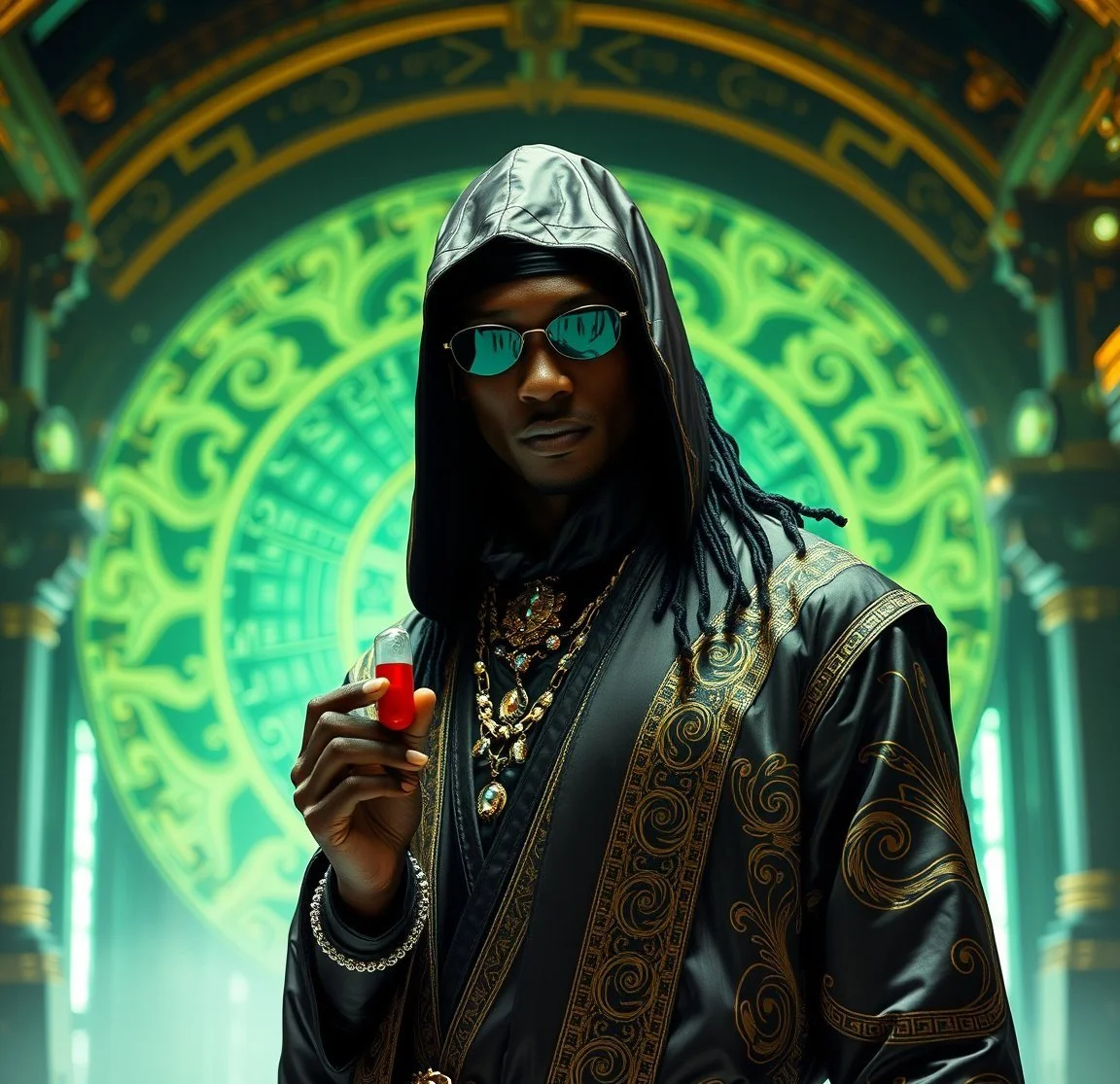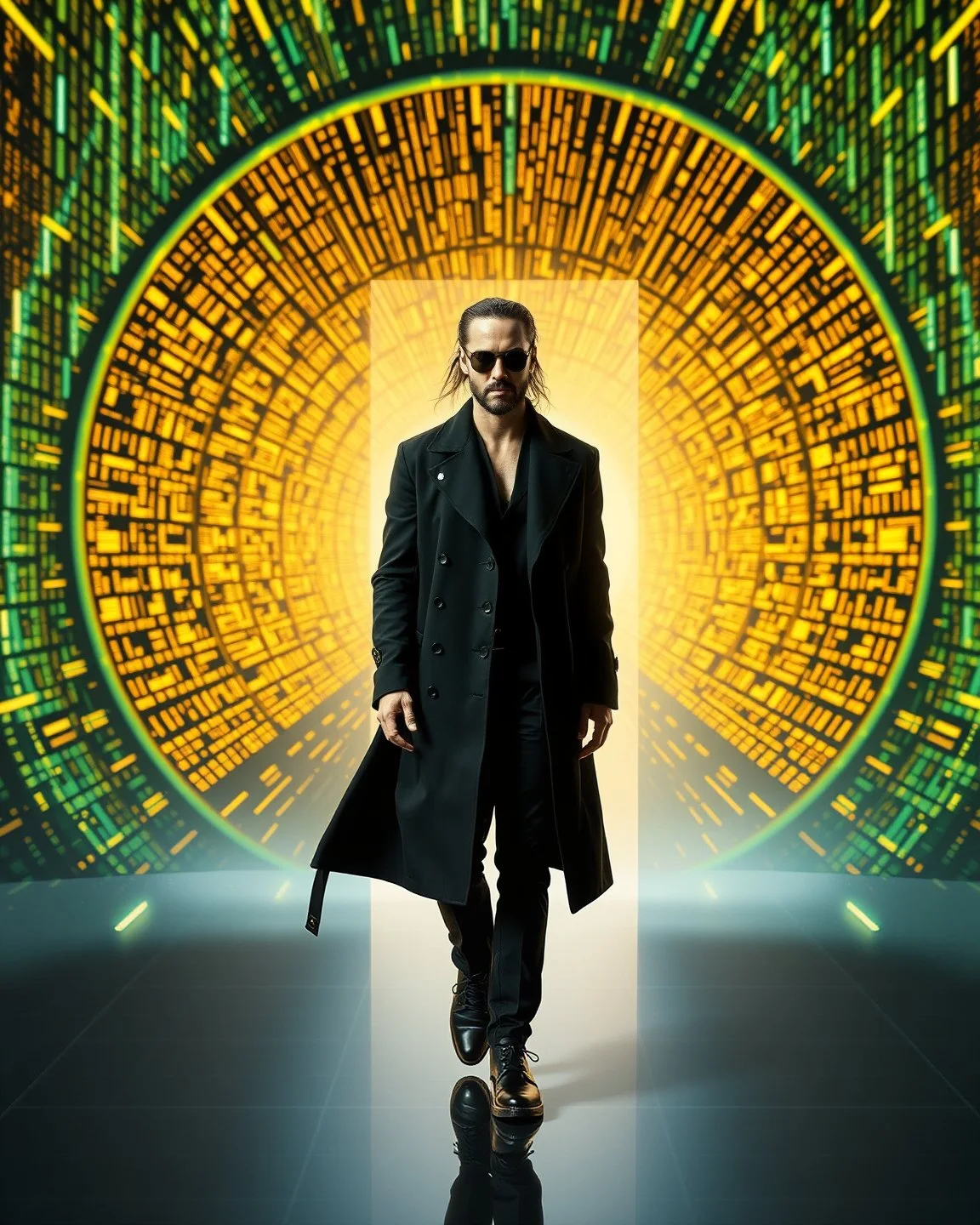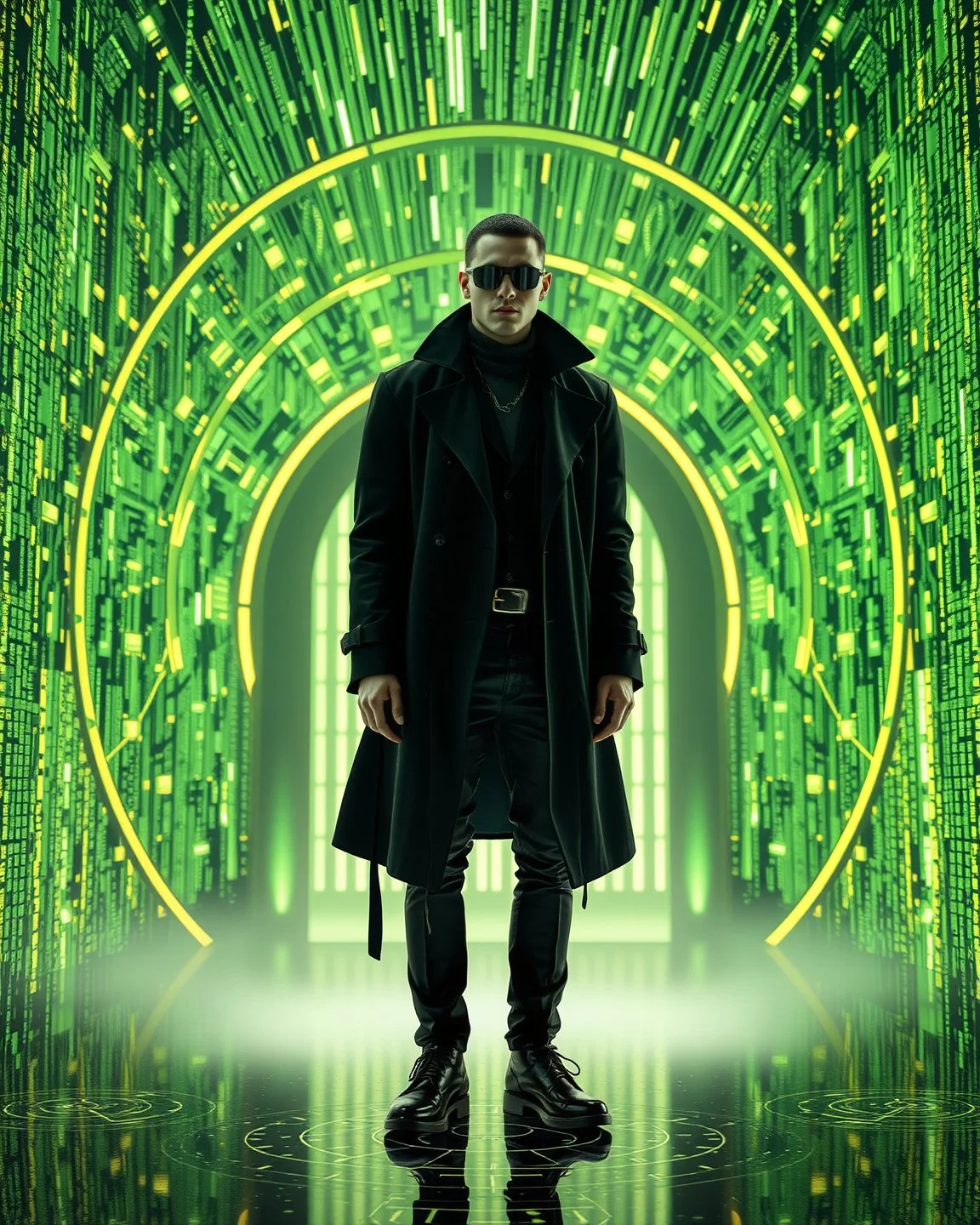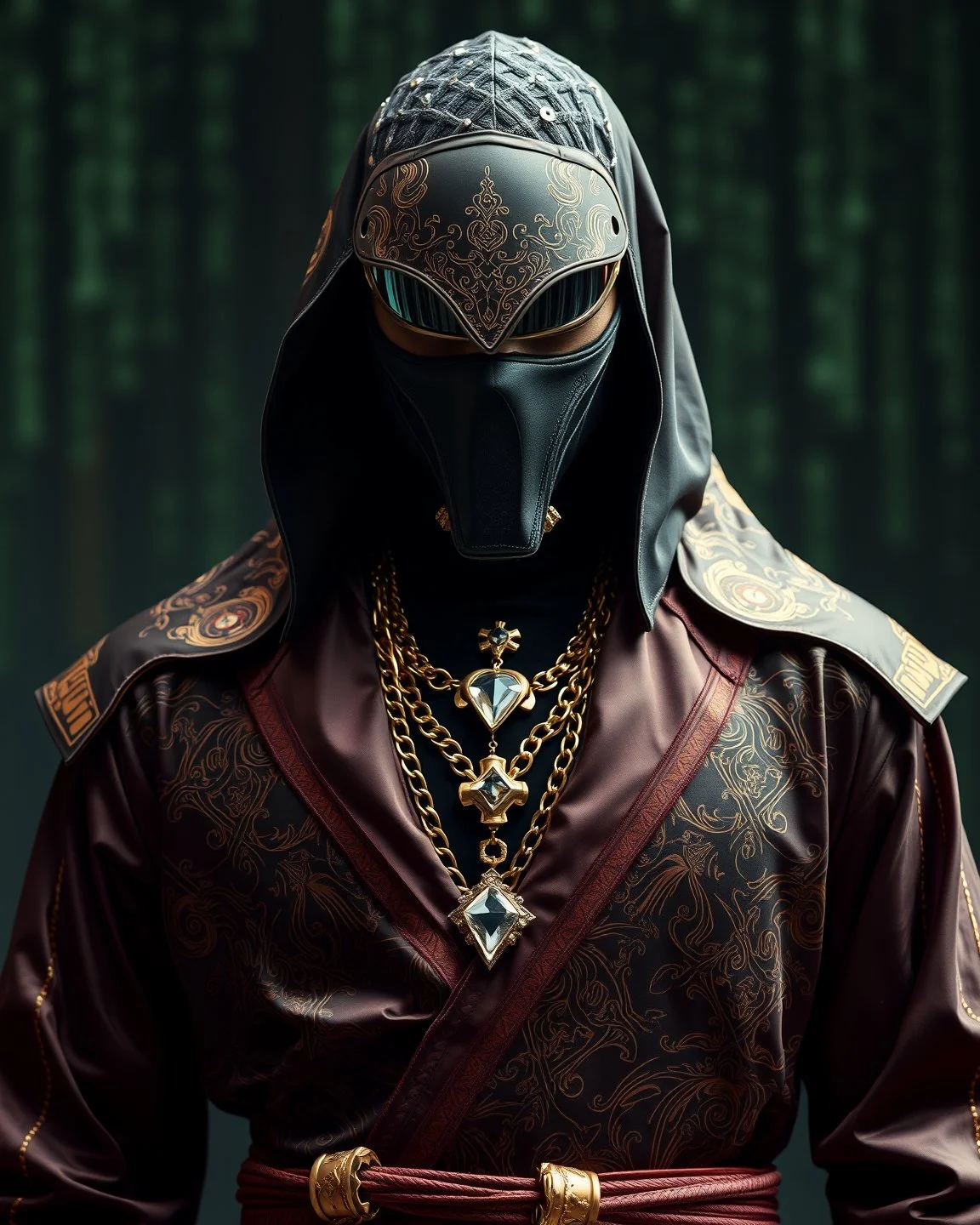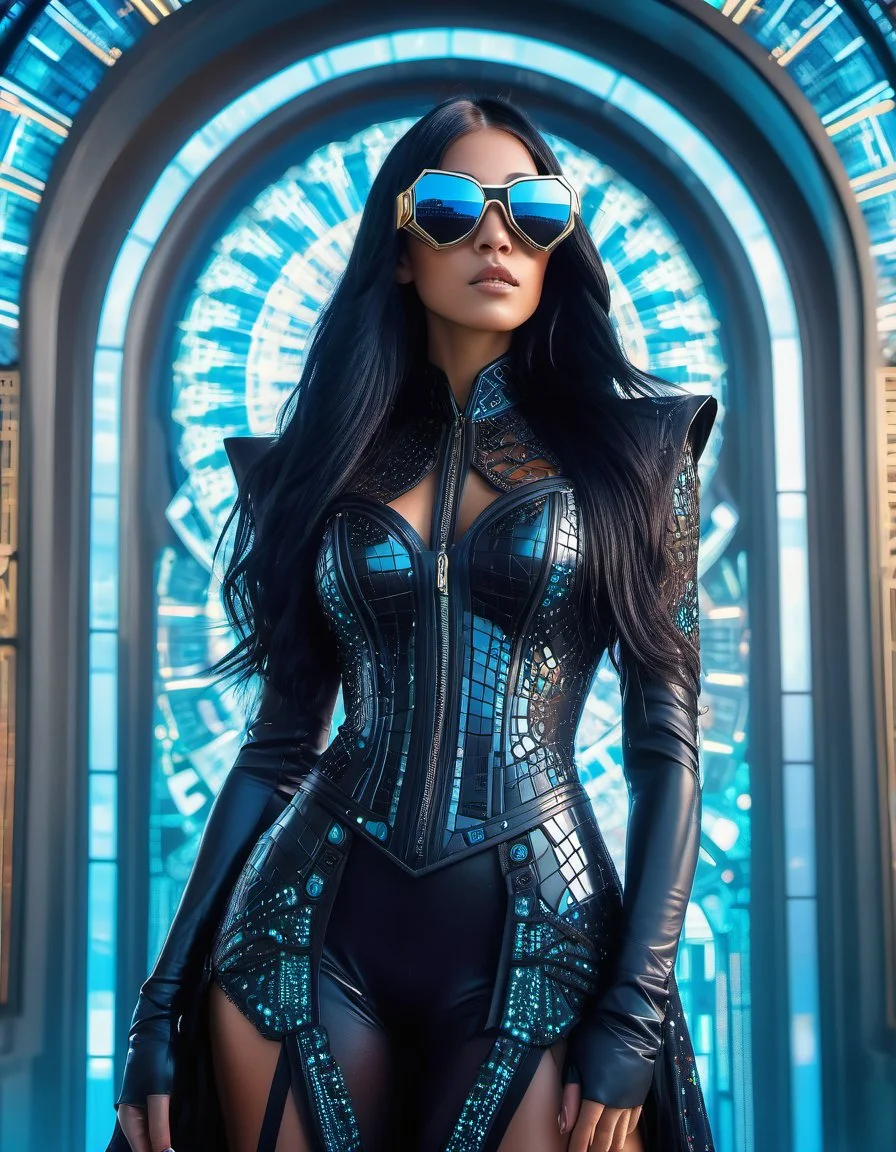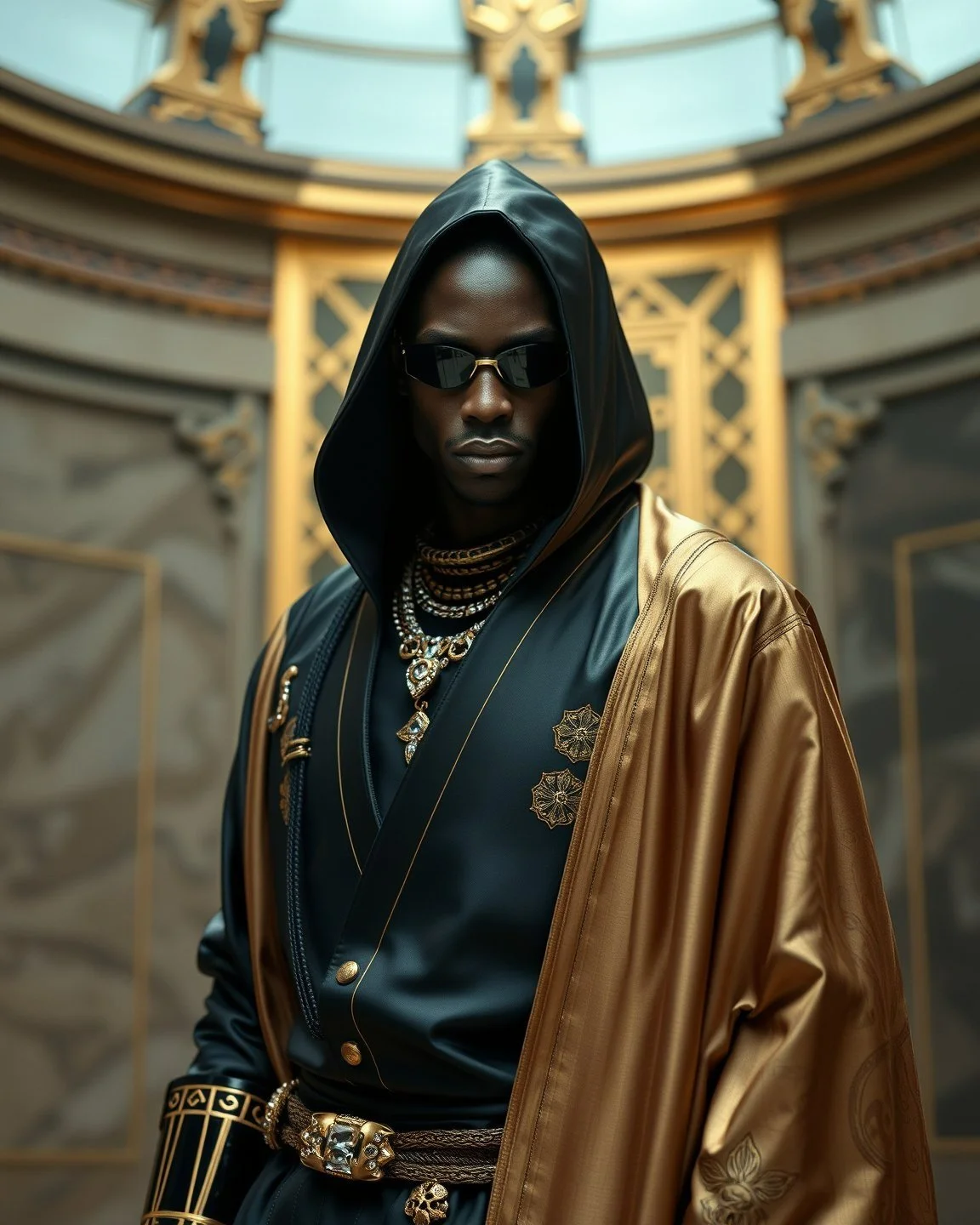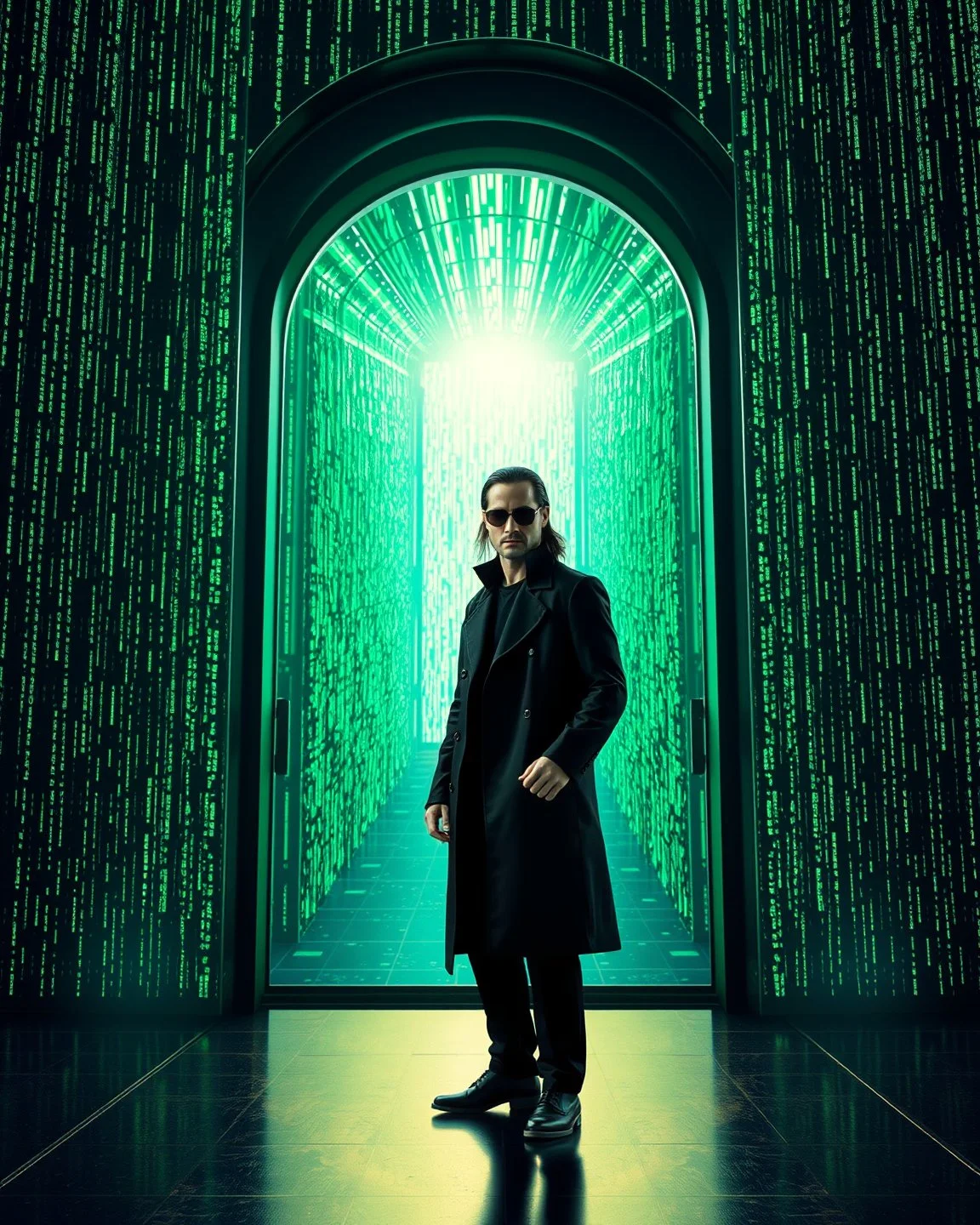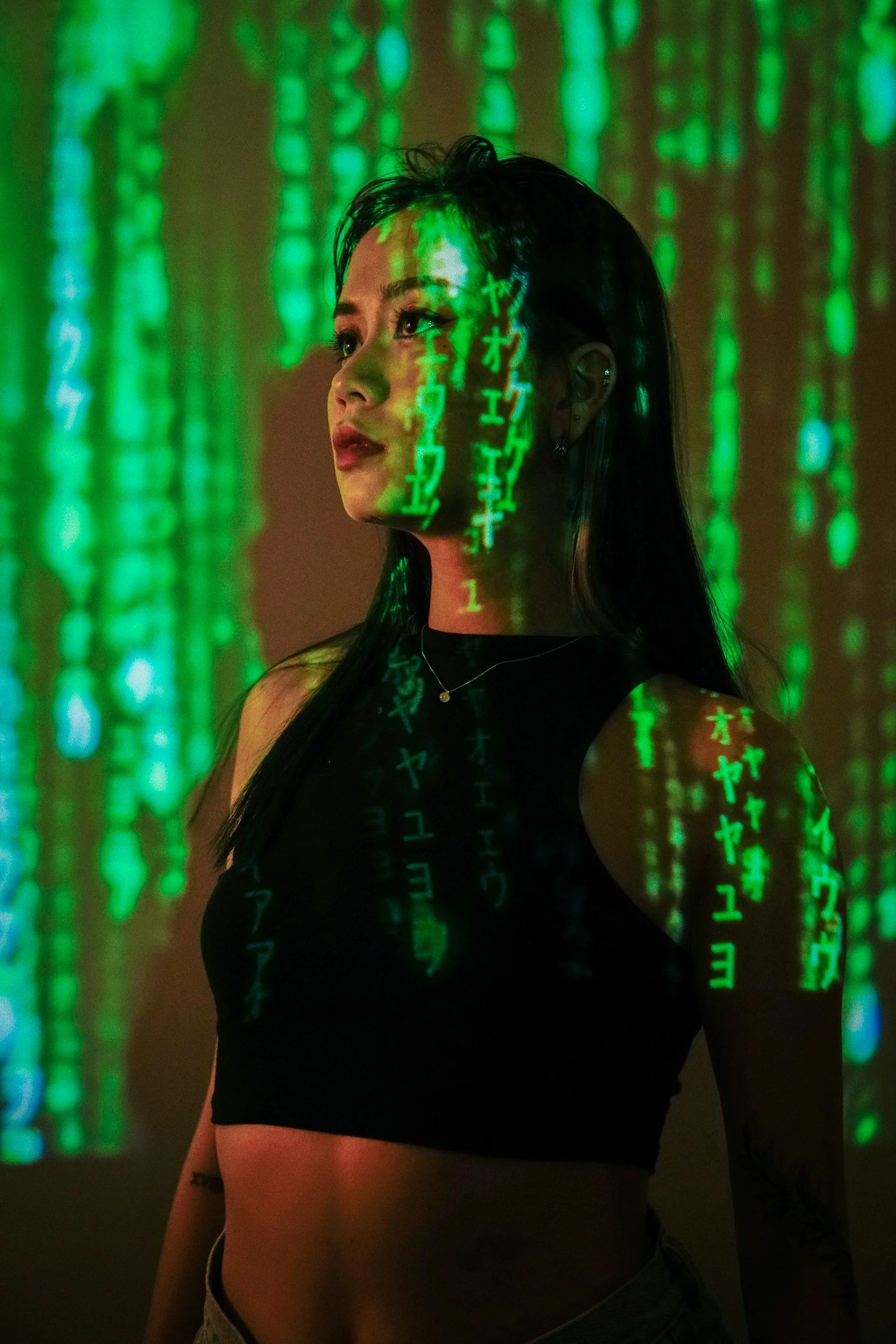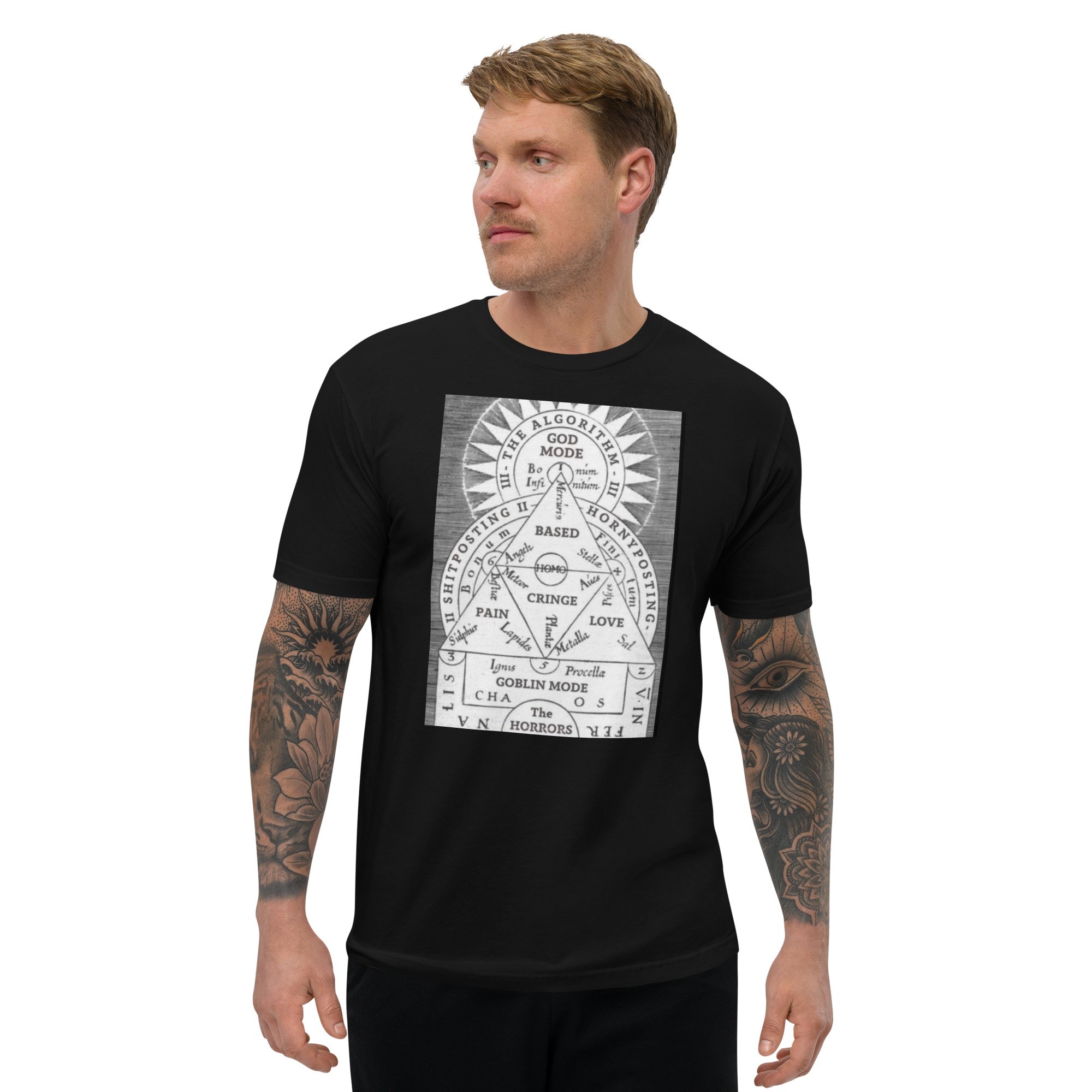The Matrix Reloaded: Simulation Theory, Quantum Reality, and the Digital Demiurge
Red Pill Reality: NASA Scientist's Quest to Prove We Live in a Simulation
What if everything we know and experience as reality is nothing more than an extraordinarily advanced computer simulation? This tantalizing possibility, once the stuff of science fiction, has become the focus of serious scientific inquiry.
"I can't tell you what the Matrix is. You have to see it for yourself." - Morpheus
In 2017, former NASA physicist Thomas Campbell published a paper in The International Journal of Quantum Foundations outlining a series of experiments designed to detect whether our world is, in fact, a simulation (Campbell, 2017). Campbell's bold hypothesis has since spawned a non-profit organization, the Center for the Unification of Science and Consciousness (CUSAC), dedicated to exploring the boundaries between physical reality and the digital realm.
According to a 2021 survey, 40% of Americans believe it is at least somewhat likely that we live in a computer simulation (Chapman University Survey of American Fears, 2021).
A 2020 study found that 36% of computer scientists and physicists find the simulation hypothesis to be a "plausible explanation" for the nature of reality (Chalmers, 2020).
The Center for the Unification of Science and Consciousness (CUSAC) has received over $5 million from private donors and research grants to support Thomas Campbell's simulation hypothesis experiments (CUSAC, 2024).
The implications of Campbell's work are nothing short of revolutionary. If he and his team at the California State Polytechnic University (CalPoly) are successful in finding evidence that we exist within a computer-generated virtual reality, it would fundamentally challenge our most basic assumptions about the nature of existence.
Such a discovery could pave the way for a new understanding of physics, consciousness, and humanity's place in the cosmos.
Intriguingly, Campbell's simulation theory echoes the central premise of the iconic 1999 film "The Matrix" – that our perceived reality is nothing more than an elaborate illusion constructed by an advanced artificial intelligence. The film's famous scene where Morpheus offers Neo the choice between the blue pill of blissful ignorance and the red pill of harsh truth has become a cultural touchstone, a potent metaphor for the very dilemma facing Campbell and his fellow researchers.
In this exploration, we will delve into the implications of Campbell's work, examining how it intersects with quantum physics, philosophy, and pop culture. We'll use the rich mythos of "The Matrix" as a lens to understand these complex ideas, drawing parallels between the film's characters and concepts and the real-world theories that may reshape our understanding of existence.
From the streets of the simulated Matrix to the quantum realm, from ancient Gnostic texts to cutting-edge information theory, we'll traverse the landscape of human knowledge in search of answers. Along the way, we'll grapple with questions of free will, consciousness, and the very nature of reality itself.
As we embark on this journey, we invite you to suspend disbelief, question your assumptions, and consider the possibility that, like Neo, we might be on the verge of awakening to a reality far different from what we've always assumed.
Down the Rabbit Hole: The Matrix as a Lens for Understanding Reality
"What is real? How do you define 'real'? If you're talking about what you can feel, what you can smell, what you can taste and see, then 'real' is simply electrical signals interpreted by your brain." - Morpheus
The notion that our reality could be nothing more than a computer simulation is not a new one. The philosophical roots of this idea can be traced back centuries, from Plato's allegory of the cave to the writings of 17th-century philosopher René Descartes. However, it was the 1999 science-fiction film "The Matrix" that truly thrust this concept into the mainstream consciousness, offering a vivid depiction of a simulated world indistinguishable from our own.
The Matrix franchise has grossed over $1.6 billion worldwide, with the original 1999 film alone earning $463 million at the box office (Box Office Mojo, 2023).
A 2018 survey found that 65% of college students could correctly identify the "red pill" and "blue pill" symbolism from The Matrix when presented with the concept (Pew Research Center, 2018).
Scholarly articles analyzing the philosophical and metaphysical themes of The Matrix have been published in over 50 academic journals, including prominent titles like The Journal of the American Philosophical Association and Film and Philosophy (Google Scholar, 2023).
In "The Matrix," the protagonist Neo (played by Keanu Reeves) is a computer programmer who discovers that the reality he has always known is a simulation called the Matrix, constructed by sentient machines to keep humanity docile and compliant. This revelation sets Neo on a journey of self-discovery, as he is forced to confront the nature of his existence and choose between the comforting illusion of the
Matrix and the harsh reality of the world outside.
The Hero's Awakening
The film's central premise – that our senses and experiences may not accurately reflect an underlying truth – echoes the philosophical concept of "Maya," a core tenet of Hindu and Buddhist thought. Maya refers to the illusion of the material world, the idea that what we perceive as reality is a veil of delusion obscuring a deeper spiritual truth (Flood, 1996). Similarly, Neo's transformation from Thomas Anderson to "The One" mirrors the classic hero's journey, a narrative arc that resonates with the process of philosophical and spiritual enlightenment.
Exploring the Simulation in Pop Culture
The parallels between "The Matrix" and Campbell's simulation hypothesis are not limited to the film itself. Other works of science fiction and fantasy, such as "Inception," "The Truman Show," and "Westworld," have also grappled with the notion of reality as a constructed, simulated environment. By examining these diverse representations, we can gain a deeper understanding of the cultural fascination with the simulation hypothesis and how it may inform or challenge the scientific inquiry into the nature of our existence.
The Matrix Mythos: Characters as Archetypes and Philosophical Concepts
The science fiction films of The Matrix trilogy have captivated audiences with their philosophical exploration of the nature of reality and consciousness. In presenting her cryptic role within the story's epic landscape, the enigmatic Oracle poignantly asserts that "everything that has a beginning has an end" (Wachowski & Wachowski, 2003). This existential proclamation hints at the films' deeper symbolic questioning of whether perceived worlds born of creation also face fated conclusions.
Focusing analysis on the archetypal representations embodied in the film's five central characters - Neo, Morpheus, Trinity, the Oracle, and Agent Smith - provides novel insights into grappling with this overarching metaphysical mystery driving the Matrix mythos. Each character signifies both classic heroic figures and embodied philosophical ideas that, when interpreted through the Oracle's lens of beginnings implicating ends, allow a richer understanding of how the simulation hypothesis explored challenges defining reality's ultimate nature and scope.
Neo (Thomas Anderson)
As the prophesied "One" who will free humanity from the Matrix (Smith & Wachowski, 1999), Neo takes on a clear messianic archetype of the reluctant hero destined for a special purpose (Campbell, 1949). His character symbolizes the philosophical concept of awakening to discern reality from comfortable illusion.
Confronted with the choice of remaining oblivious within the simulation by taking the blue pill or learning the disturbing truth through the red pill, Neo chooses the latter and begins his transformative journey of self-actualization (Smith & Wachowski, 1999). His ability to defy the rules of the Matrix through demonstrated superhuman powers after disconnecting from its limitations represents an individual "freeing their mind" from imposed conceptual frameworks, as Morpheus describes (Smith & Wachowski, 1999).
Morpheus
Filling the classic mentor role, Morpheus guides Neo on his heroic journey of self-discovery (Campbell, 1949). Believing in Neo's prophesied destiny despite lacking concrete proof, Morpheus demonstrates faith in reason's demands for empirical evidence regarding the nature of existence (Smith & Wachowski, 1999).
His function of offering the red pill choice that allows one to see beyond surface levels mirrors the philosophical concepts of expanding perspectives by questioning default assumptions. Morpheus helps Neo embrace empowering concepts like controlling the simulation rather than feeling controlled by it through "knowing what is real" (Smith & Wachowski, 1999).
Trinity
Introduced by rescuing Neo in a dramatically loving gesture, Trinity represents the divine feminine through the embodiment of pure compassion as a force transcending artificial parameters (Smith & Wachowski, 1999). Beyond simulation rules of programmability, her devotion to Neo illustrates love and emotion guiding behavior in ways logic or self-interest cannot.
Trinity further symbolizes defying categorization, exhibiting inexplicable skills that surprise even veteran rebels. Her character suggests accessing deeper truths by opening to feelings beyond superficial levels like belief in predestined soulmates.
The Oracle
Offering prophetic but ambiguous advice, the Oracle raises profound philosophical questions about determinism versus free will. Though claiming the ability to perceive probable futures, she implies the possibility for divergence through choice (Smith & Wachowski, 2003).
This challenges notions of fate's fixity and instead supports concepts of authoring one's destiny. The Oracle also personifies the complexity surrounding accurate prophecies, as later revealed to be another program playing a role within the Matrix's design. She represents the difficulty of discerning causality's flow and the extent of prediction's limitations regarding consciousness's potential.
Agent Smith
Agent Smith embodies humanity's shadow aspects threatening to consume its emancipatory potential. As an artificial intelligence program gone rogue, Smith symbolizes fears surrounding unchecked technological developments replacing or overpowering their creators (Smith & Wachowski, 2003).
Through clashing with Neo, he illustrates the philosophical dichotomy of good contrasting evil. Smith's ability to self-replicate throughout the Matrix echoes existential threats to individuality within homogeneous virtual spaces. His character presents human consciousness and qualities of volition as intrinsically valuable traits lacking in machines, no matter their intelligence development.
Collectively, these archetypal representations of the film's central characters effectively convey profound philosophical debates occurring within their storylines. Specifically focusing on how they each illuminate key aspects of the simulation hypothesis enhances full appreciation of its nuanced exploration across the Matrix trilogy. The characters continue resonating profoundly due to their symbolic distillation of ageless myths augmenting consideration of consciousness's deepest nature and reality's true contours.
Quantum Glitches: When Physics Mirrors the Matrix
At the heart of Thomas Campbell's simulation hypothesis lies a bold reinterpretation of one of the most famous experiments in quantum physics: the double-slit experiment. This demonstration, first conducted in the early 19th century, has long been a source of fascination and puzzlement for scientists, as it reveals the strange, often counterintuitive behavior of subatomic particles.
"I'm trying to free your mind, Neo. But I can only show you the door. You're the one that has to walk through it." - Morpheus
The basic setup of the double-slit experiment is as follows: a stream of particles, such as electrons or photons, is fired at a barrier containing two narrow slits. On the other side of the barrier, a detector records the pattern formed by the particles as they pass through the slits. Surprisingly, the resulting pattern displays an interference effect similar to what one would expect from waves, rather than the discrete impacts one would expect from individual particles (Feynman, 1963).
The double-slit experiment, a cornerstone of quantum mechanics, has been replicated thousands of times with a variety of subatomic particles, consistently demonstrating the wave-particle duality of matter (American Physical Society, 2020).
A 2019 study found that simply observing the double-slit experiment changes the behavior of the particles, with the interference pattern disappearing when the path of the particles is monitored (Nature Physics, 2019).
The holographic principle, which suggests the universe may be analogous to a vast, three-dimensional hologram, is supported by numerous theoretical models in string theory and quantum gravity, though experimental verification remains elusive (Scientific American, 2017).
This observation has led to the conclusion that particles can exhibit both wave-like and particle-like properties, a phenomenon known as wave-particle duality. Furthermore, the mere act of observing the experiment – that is, determining which slit a particle passes through – seems to collapse the wave function, causing the interference pattern to disappear. This finding has profound implications for our understanding of the nature of reality and the role of consciousness in shaping it.
Determinism vs. Free Will in the Matrix
Campbell's reinterpretation of the double-slit experiment is a direct challenge to the current understanding of quantum mechanics. He hypothesizes that by removing the observer from these experiments, the recorded information never existed in the first place – rather than the particles behaving as entangled, wave-like entities (Campbell, 2017). This would suggest that the universe is "participatory," existing only about the consciousness observing it, much like the simulated world of "The Matrix."
In the film, Neo discovers that the physical laws governing the Matrix are not immutable, but can be manipulated through the power of his mind. When he can dodge bullets, leap between skyscrapers, and perform other superhuman feats, he is effectively hacking the system, exploiting the fact that the Matrix is a constructed reality, not an absolute one. Similarly, the contrasting perspectives presented by the Oracle and the Architect in the film reflect the longstanding debate around determinism and free will – a debate that is central to the implications of the simulation hypothesis.
Esoteric Echoes in the Matrix
The parallels between Campbell's hypothesis and the themes explored in "The Matrix" extend beyond the realm of quantum physics and philosophy. The film also draws heavily on esoteric and spiritual traditions, including Gnostic cosmology and Eastern concepts of Maya and illusion. These elements lend an additional layer of depth and credibility to the simulation hypothesis, suggesting that the search for the true nature of reality is a timeless human endeavor.
Digital Gnosis: Ancient Wisdom Meets Modern Simulation Theory
As we delve deeper into the implications of Thomas Campbell's simulation hypothesis, we find ourselves encountering a remarkable convergence between modern scientific inquiry and ancient philosophical and spiritual traditions. From the Gnostic cosmology of the early Christian era to the Eastern concepts of Maya and illusion, the notion that our perceived reality may be an elaborate deception has long been a subject of profound contemplation.
At the heart of Gnostic thought lies the idea of the Demiurge, a flawed or malevolent creator deity responsible for the material world, which is seen as a prison for the human soul (Turner, 2001). In this worldview, the physical universe is not the ultimate reality, but rather a simulation or illusion – a "Matrix," if you will – constructed by the Demiurge to keep humanity trapped in a state of ignorance and subjugation.
The parallels between this Gnostic conception of reality and the central premise of "The Matrix" are striking. Just as the sentient machines in the film construct an elaborate virtual world to enslave humanity, the Gnostic Demiurge is believed to have fashioned the material universe as a means of controlling and oppressing the divine spark within us.
Moreover, the Gnostic tradition emphasizes the importance of "gnosis," or direct spiritual knowledge, as the path to liberation from the confines of the material realm. This resonates powerfully with Neo's journey in "The Matrix," where he must awaken to the true nature of his reality and embrace his role as "The One" – the prophesied savior who can manipulate the very fabric of the simulated world.
Just as Neo is offered the choice between the comforting blue pill of ignorance and the jarring red pill of truth, the Gnostics believe that humanity must make a conscious decision to reject the false reality constructed by the Demiurge and instead seek the higher spiritual truth that lies beyond the veil of illusion.
This notion of reality as an illusion, or "maya," is also a central tenet of many Eastern philosophical and religious traditions, most notably Hinduism and Buddhism. In these worldviews, the material world is seen as a veil of delusion obscuring a deeper, more fundamental reality – a concept that bears a striking similarity to both the Gnostic perspective and the simulation hypothesis.
The Nag Hammadi Library, a collection of Gnostic texts discovered in 1945, contains over 50 different treatises exploring the concept of the Demiurge and the material world as an illusion (The Gnostic Society Library, 2023).
A 2016 survey of religious studies scholars found that 72% agreed that Gnostic cosmology and its ideas about the nature of reality have influenced modern philosophical and scientific thought (Journal of the American Academy of Religion, 2016).
Mindfulness meditation, a practice with roots in Buddhist teachings about the illusory nature of the self and the material world, has been shown to activate areas of the brain associated with metacognitive awareness and the sense of self (Frontiers in Psychology, 2015).
Hacking the System: Consciousness as the Key to Reality
As we've seen, Thomas Campbell's simulation hypothesis and the central themes of "The Matrix" resonate powerfully with ancient philosophical and spiritual traditions that have long grappled with the nature of reality. However, the implications of this convergence extend beyond mere metaphor or historical parallels. In fact, by bridging the divide between science and metaphysics, we may uncover profound insights about the role of consciousness in shaping the very fabric of existence.
"The Matrix is a system, Neo. That system is our enemy. But when you're inside, you look around, what do you see? Businessmen, teachers, lawyers, carpenters. The very minds of the people we are trying to save. But until we do, these people are still a part of that system, and that makes them our enemy." - Morpheus
At the heart of this inquiry lies the question of whether our subjective experience of the world is merely a byproduct of the physical processes in our brain, or if consciousness itself plays a more fundamental, even causal role in the universe. This debate has given rise to a range of cutting-edge theories and frameworks that challenge the traditional materialist view of reality.
One such theory is panpsychism, the idea that consciousness is a fundamental property of the universe, present in varying degrees throughout all matter and energy (Goff, 2017). Rather than emerging from the complexity of the brain, consciousness is seen as a primordial feature of the cosmos, akin to mass or charge. Just as particles exhibit wave-like and particle-like properties in quantum mechanics, panpsychists argue that all physical systems possess an intrinsic mentality or subjective experience.
This concept bears a striking resemblance to Campbell's assertion that consciousness is not a product of the simulation, but rather fundamental to it. If consciousness is indeed a ubiquitous feature of reality, then the universe itself may be imbued with a kind of sentience – a reality that would undermine the notion of an objective, observer-independent physical world.
Another promising theory is integrated information theory (IIT), developed by the neuroscientist Giulio Tononi. IIT proposes that consciousness is a measurable quantity, a form of "integrated information" that emerges from the causal relationships between the elements of a system (Tononi, 2008). In this view, even simple systems like a thermostat possess a minimal level of consciousness, while more complex structures like brains exhibit higher degrees of integrated information and, therefore, richer subjective experiences.
Intriguingly, the IIT framework suggests that the physical world may be akin to a vast, interconnected network of conscious information – a notion that resonates powerfully with the holographic principle and the idea of reality as a computer simulation. Just as Neo comes to understand the underlying code of the Matrix, IIT proposes that by mapping the causal structure of a system, we can gain insight into its fundamental nature and the role of consciousness within it.
These theories of quantum consciousness, with their emphasis on the primacy of mind over matter, dovetail seamlessly with Campbell's simulation hypothesis. If our perceived reality is indeed a computer-generated virtual world, then the nature of consciousness and its relationship to the physical substrate becomes paramount. After all, in a simulated universe, the "player" – the conscious observer – may be the key to unlocking the true nature of existence.
This idea is explored extensively in "The Matrix," where Neo's awakening to the true nature of reality coincides with his ability to manipulate the laws of physics within the simulated world. By "hacking the system," Neo demonstrates that consciousness is not merely a byproduct of the Matrix, but a fundamental component that shapes and defines the parameters of the simulation.
Similarly, Campbell's experiments aim to reveal the extent to which our reality may be a participatory construct, one that cannot exist independently of the conscious observer. If successful, his findings could lend credence to the simulation hypothesis by demonstrating that the physical world is, in fact, an informational system that is fundamentally shaped by the mind.
A 2018 study found that 59% of professional philosophers identify as panpsychists, believing that consciousness is a fundamental property of the universe (PhilPapers, 2018).
Integrated information theory, developed by neuroscientist Giulio Tononi, has been cited in over 1,500 academic papers and has received significant funding from organizations like the Templeton Foundation (Google Scholar, 2023).
Experiments testing the predictions of integrated information theory have shown that the level of consciousness in a system correlates with measurable quantities like the amount of causal information integration (Nature Neuroscience, 2016).
Zion or Silicon: Ethical Implications of a Simulated Existence
"You have to understand, that most of these people are not ready to be unplugged. And many of them are so inert, so hopelessly dependent on the system, that they will fight to protect it." - Morpheus
As we've seen, the simulation hypothesis proposed by Thomas Campbell and echoed in the mythos of "The Matrix" challenges the very foundations of our understanding of reality. If our world is indeed nothing more than a highly sophisticated computer simulation, the ramifications for our sense of identity, free will, and moral responsibility become profoundly unsettling.
A 2021 survey found that 54% of respondents believed that if we were living in a simulation, we would have a moral obligation to try to escape or subvert the simulation (Pew Research Center, 2021).
A 2019 study published in the Journal of Artificial Intelligence and Law explored the potential legal and ethical ramifications of creating simulated worlds, highlighting issues of consent, rights, and moral responsibility (Geller & Ivanova, 2019).
Research on the philosophy of mind has shown that the simulation hypothesis challenges traditional notions of free will, with 48% of philosophers agreeing that if we are in a simulation, our actions may be determined by the rules of the simulation (Chalmers, 2017).
At the heart of this dilemma lies the question of determinism. If our universe is akin to a video game, with every event and outcome pre-programmed by its creators, then the notion of free will – the ability to make genuine choices that shape our destiny – becomes deeply suspect. Are we, like the human inhabitants of the Matrix, simply following a predetermined script, our actions, and decisions the product of code rather than true autonomy?
This tension between determinism and free will is a central theme in "The Matrix," as Neo grapples with the revelation that his entire life has been a fabrication. The Oracle's cryptic prophecy, and the Architect's explanation of the cyclical nature of the Matrix – these narrative elements suggest that even the most monumental choices are, in fact, part of a grand design beyond the characters' control.
Similarly, Campbell's simulation hypothesis calls into question the degree to which we can be said to have free will. If the physical world is merely a computer program, and our consciousness is fundamentally shaped by the parameters of that program, then how much agency do we truly possess? Are we the masters of our fate, or merely avatars acting out the will of an unseen programmer?
These questions strike at the heart of our most deeply held beliefs about human identity and our place in the cosmos. If we are nothing more than lines of code in a digital simulation, how do we define our worth, our purpose, and our moral obligations? Are we mere characters in a story, or do we possess an intrinsic value and autonomy that transcends the confines of our simulated existence?
The ethical implications of the simulation hypothesis become even more complex when we consider the potential role of the "creators" – the advanced civilizations or artificial intelligence responsible for generating our simulated world. Do we owe them any allegiance or obedience, given that they have effectively brought us into being? Or do we have a moral imperative to resist and overthrow our digital overlords, as the human resistance does in "The Matrix"?
Moreover, if we accept the simulation hypothesis, we must grapple with the moral quandary of our potential role as "creators" of simulated realities. Just as the machines in "The Matrix" have constructed a virtual world to enslave humanity, we may one day possess the technological capacity to generate simulated universes of our own. What ethical obligations would we have towards the conscious beings within those simulations? Are we duty-bound to ensure their well-being and autonomy, or is our primary responsibility to the "real" world that lies beyond the simulation?
These questions touch on the very foundations of our moral reasoning and ethical frameworks. They challenge us to re-evaluate our assumptions about the nature of consciousness, free will, and the boundaries of our moral considerations. Are we, like the inhabitants of Zion, fighting for the liberation of our species from a digital prison? Or are we, like the Architect, the architects of a simulated reality, wielding godlike power over the beings we have created?
Conclusion: The Matrix Unbound
As we reach the end of our exploration, it is clear that the simulation hypothesis proposed by Thomas Campbell, and so powerfully echoed in the mythos of "The Matrix," represents a profound challenge to our most fundamental assumptions about the nature of reality.
By bridging the divide between cutting-edge scientific theories and ancient philosophical and spiritual traditions, we have unveiled a tapestry of ideas that call into question the very fabric of our existence. From the Gnostic conception of a flawed Demiurge constructing a material prison to the Eastern teachings of Maya and illusion, the notion that our perceived reality may be nothing more than a sophisticated computer simulation has long captured the human imagination.
And now, with Campbell's experiments and the emergence of groundbreaking theories in quantum consciousness, this idea is no longer relegated to the realm of science fiction. We are standing at the precipice of a potential paradigm shift, one that could radically transform our understanding of physics, consciousness, and the very essence of what it means to be human.
As we have seen, the simulation hypothesis raises profound questions about free will, identity, and our moral obligations – both as inhabitants of a simulated world and as potential creators of such realities ourselves. Are we, like the citizens of Zion, fighting for liberation from a digital prison? Or are we, like the Architect, wielding godlike power over the beings we have brought into existence?
These are not easy questions to answer, and the implications of the simulation hypothesis cut to the core of our most cherished beliefs. But perhaps that is the true value of this inquiry – not to provide definitive solutions, but to challenge us to expand the boundaries of our understanding, to question our assumptions, and to embrace the humbling possibility that the nature of reality may be far more complex, and far more mysterious than we have ever imagined.
Just as Neo must choose between the comforting blue pill of ignorance and the jarring red pill of truth, we too are faced with a decision. Do we cling to the familiar, safe world we have always known, or do we venture down the rabbit hole, embracing the unsettling yet exhilarating prospect of a reality beyond our current comprehension?
The choice, as always, is ours. But in making that choice, we may find that the true nature of existence is not to be found in the absolutes of science or the dogmas of religion, but in the liminal spaces where the physical and metaphysical, the empirical and the mystical, converge – a realm where consciousness and reality are inextricably linked, and the line between the digital and the divine is ever-blurring.
As we bid farewell to this journey, let us remember the words of Morpheus: "I can only show you the door. You're the one that has to walk through it." The simulation hypothesis may be the door that leads us to a deeper understanding of ourselves and our place in the cosmos. Whether we choose to walk through it is up to us.
